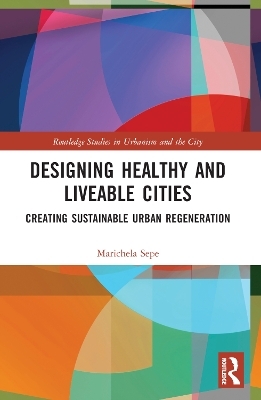
Designing Healthy and Liveable Cities
Routledge (Verlag)
978-0-367-56644-9 (ISBN)
In the last ten years, concepts such as urban health and liveability have become ever more present in urban planning studies. Many companies rank the most liveable city in the world or in a nation, and many indicators are used to try to measure factors which can report the health of a place by investigating it in different ways. While it is possible to understand why a place is liveable – due to the liveability and health concepts that are being more and more explored in urban studies, and the strong influence coming from other disciplines – it is difficult to design a place that is certain to be healthy and liveable.
Accordingly, aim of this book is, after the definition of the field of investigation concerning sustainable regeneration trough topics such as resilience, adaptation, health, and mixed connections, to illustrate the present-day approaches to the analysis and design of healthy places, and in particular the original Healthy Pl@ce Design method, flexible and repeatable in different contexts. The method aims to identify sustainable urban liveability and healthiness and the factors which make places liveable and healthy from users' points of view and identifying design interventions that can enhance or create both urban liveability and health. Emblematic case studies carried out in Europe, Canada and China – Bordeaux, Copenhagen, Hamburg, Madrid, Newcastle–Gateshead, Nice, Dublin, Vancouver and Wuhan – constitute the empirical part of the book, detailed with surveys, questionnaires, images and maps.
The theoretical framework – built on contemporary issues – and international case studies make this book both attractive and scientific, adding a new stone on the sustainable city construction and opening it to a particularly wide readership, including scholars, students, administrators and professionals.
Marichela Sepe is a researcher with the Institute for Studies on the Mediterranean of the Italian National Research Council in Naples, Italy. She joined the Department of Architecture of the University of Naples Federico II in 2003, where she serves as a contract professor of urban planning. Sepe is on the Steering Committee of the Italian Institute of Urban Planning and European Urban Research Association and is a member of the International Committee for Documentation and Conservation of Buildings, Sites, and Neighbourhoods of the Modern Movement and of the Urban Design Group.
Introduction. PART I: Sustainable Urban Regeneration. 1: Holistic Approach. 2: Resilience and Adaptation. 3: Healthy Urban Places. 4: Mixed Connections. 5: Indicators. PART II: Mapping Healthy and Liveable Places. 6: 15-Minute City. 7: Flexible City. 8: Soft City. 9: Smart City. PART III: The Healthy Pl@ce Design Method. 10. Analysis. 11. Design. 12. Healthy Place App. 13. Indices. 14. Observation. PART IV: Case Studies. 15. Bordeaux. 16. Copenhagen. 17. Dublin. 18. Hamburg. 19. Madrid. 20. Newcastle-Gateshead. 21. Nice. 22. Vancouver. 23. Wuhan. Conclusion: Principles of Urban Health and Liveability Design. References.
| Erscheinungsdatum | 17.08.2022 |
|---|---|
| Reihe/Serie | Routledge Studies in Urbanism and the City |
| Zusatzinfo | 4 Tables, black and white; 17 Line drawings, black and white; 101 Halftones, black and white; 118 Illustrations, black and white |
| Verlagsort | London |
| Sprache | englisch |
| Maße | 156 x 234 mm |
| Gewicht | 453 g |
| Themenwelt | Naturwissenschaften ► Geowissenschaften ► Geografie / Kartografie |
| Sozialwissenschaften ► Soziologie ► Makrosoziologie | |
| Technik ► Architektur | |
| ISBN-10 | 0-367-56644-3 / 0367566443 |
| ISBN-13 | 978-0-367-56644-9 / 9780367566449 |
| Zustand | Neuware |
| Informationen gemäß Produktsicherheitsverordnung (GPSR) | |
| Haben Sie eine Frage zum Produkt? |
aus dem Bereich


